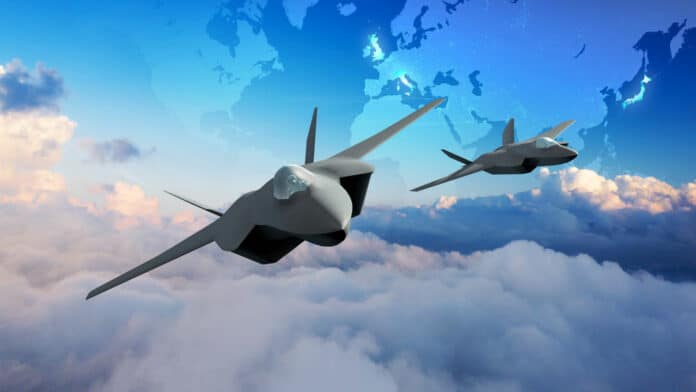UK, Japan, and Italy have signed an international treaty in Tokyo for a future combat air program that aims to develop an innovative stealth fighter with supersonic capability and equipped with cutting-edge technology.
The new agreement merges the British Tempest and Japan’s Mitsubishi F-X projects into a single enterprise along with partner Italy. This is the result of a complex mixture of international diplomacy and bleeding-edge technology.
Tempest was launched in 2015 as Britain’s response to being frozen out of France and Germany’s Sixth-Gen Future Combat Air System (FCAS) project and was intended to maintain UK defense independence and its aerospace industry edge. On the other hand, Japan’s Mitsubishi F-X was in direct response to the US refusal to offer its F-22 interceptor for export, forcing Japan to seek its own stealth air superiority fighter.
Furthermore, the current global instability and increasing aggression of Russia and China have shifted the emphasis to bolstering the Indo-Pacific region, resulting in Japan and Britain seeking closer cooperation in security areas.
In December last year, the three countries came together to work on a project as ambitious as the Global Combat Air Programme (GCAP) to develop one of the world’s most advanced fighter jets by 2035. The partnership, which will be headquartered in Britain with a rotating CEO from each partner nation, beginning with Japan, aims to leverage the latest technologies and achieve unprecedented levels of interoperability, adaptability, and connectivity among the world’s most advanced combat air systems. The program is also expected to create highly-skilled jobs in the UK and in partner countries over the next decade and beyond.
The supersonic stealth jet will boast a powerful radar that can provide 10,000 times more data than current systems, which will undoubtedly provide a significant advantage in battle.
BAE Systems is leading the effort in the UK, along with Rolls-Royce, Leonardo UK, and MBDA UK – as well as hundreds of companies in the supply chain from across the country. Together, they are working closely with lead companies from Japan and Italy to progress the design and development of this aircraft.
In combat air, the MOD has invested £2 billion in the UK over the last five years on technology, creating skills and capabilities – with a further £600 million from industry partners- to ensure the UK is ready to drive this program forward.
The GCAP is a crucial program for the future of stability in the Euro Atlantic, Indo-Pacific, and wider global security, and it’s a great example of the UK’s global leadership in developing the next-generation military capability to deter and defeat threats to the UK and its allies.
“Our world-leading combat aircraft program aims to be crucial to global security, and we continue to make hugely positive progress toward delivery of the new jets to our respective air forces in 2035,” Defence Secretary Grant Shapps said in the release. “The UK-based headquarters will also see us make important decisions collaboratively and at pace, working with our close partners Italy and Japan, and our impressive defense industries, to deliver an outstanding aircraft.”
